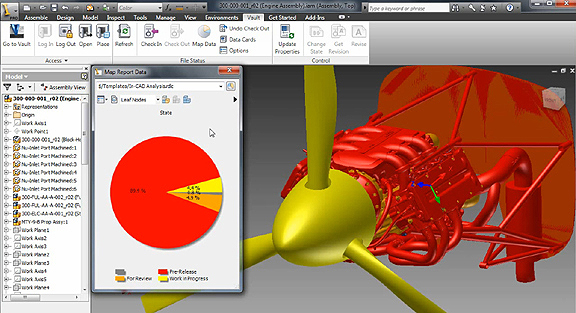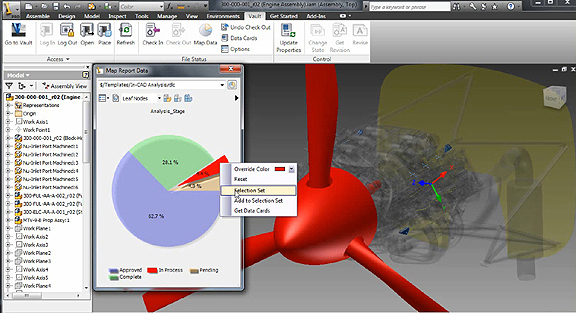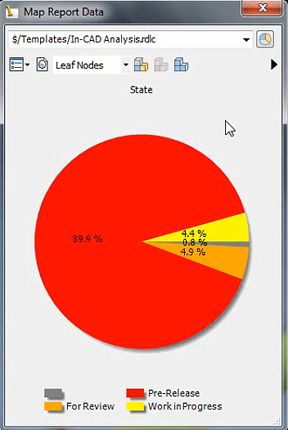Latest News
April 12, 2010



Thursday, April 8: At midday, as my journalist cohorts and I were herded into a room for a presentation of Autodesk Vault 2011, I overheard Brian Roepke, senior product manager for the Vault product line, talking to a colleague.
“I’ll show ‘em that data management can be sexy,” he vowed.
“The only way to do that is to get Angelina Jolie as the presenter,” I warned him.
“Oh, yeah? I’ll make you eat your words. You just watch,” he checked me.
Roughly 60 mins later, I emerged from the conference room with the realization that data-management now has a new face. It isn’t exactly the face of a Hollywood actress, but it’s the face of a model—your 3D CAD model. Gone is the usual, uninspiring Excel-like interface so common among data management systems. With Autodesk Vault 2011, Workgroup Edition, your Inventor 3D model is your data management interface.
Suppose you need to get a snapshot of your project, to scan the parts that are released to production, those that are behind deadline, and those that are in revision. You won’t need to squint at a series of columns and cells populated with check marks and dates to get the information. Instead, you can launch your 3D assembly and get the status reports, right from within Autodesk Inventor. Your model will become a color-coded assembly, with all the revisions, released parts, and delayed parts highlighted in different shades. You’ll still get pie charts, but they now work as legends that tell you what each color represents.
Dassault, makers of SolidWorks and a competitor to Autodesk in mid-range CAD, also advocates the use of a 3D assembly to inspect and view product lifecycle management (PLM) repositories. It calls its solution 3DLive Product Information. Late last year, Siemens PLM Software took a similar approach to data management with NX with HD3D, described as “a simple and intuitive way to collect, collate, and present information” (see “NX7 with HD3D: Where CAD Geometry and Lifecycle Mingle,” November 2009). However, Roepke pointed out Autodesk Vault’s visual data-management environment had been in development for roughly 18 months, so it wasn’t a reaction to Siemens’ HD3D.
The visual environment is driven by meta data you maintain using Inventor and Vault (part numbers, suppliers, check-in, check-out, and so on). The new approach may yield insights into your project that weren’t easy to obtain before. For instance, by displaying parts that are delayed or overdue by geographical distribution, you may be able to detect certain bottlenecks and hiccups in your supply chain or subcontractors who are under-performing.
According to Roepke, Autodesk Vault Workgroup (despite its name) may be used as an enterprise-class PDM platform. Basic Autodesk Vault comes free of charge with purchase of most major Autodesk products (such as Autodesk Inventor), but upgrade to more robust editions requires fee.
Subscribe to our FREE magazine, FREE email newsletters or both!
Latest News
About the Author
Kenneth Wong is Digital Engineering’s resident blogger and senior editor. Email him at [email protected] or share your thoughts on this article at digitaleng.news/facebook.
Follow DERelated Topics






